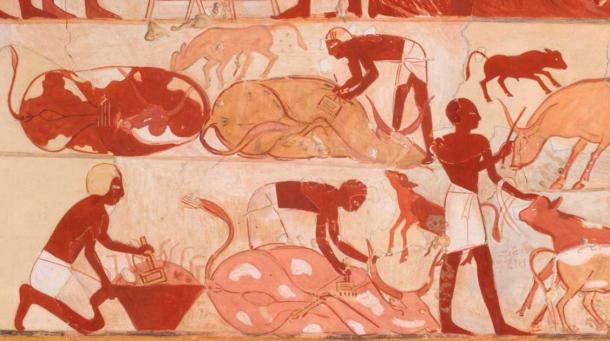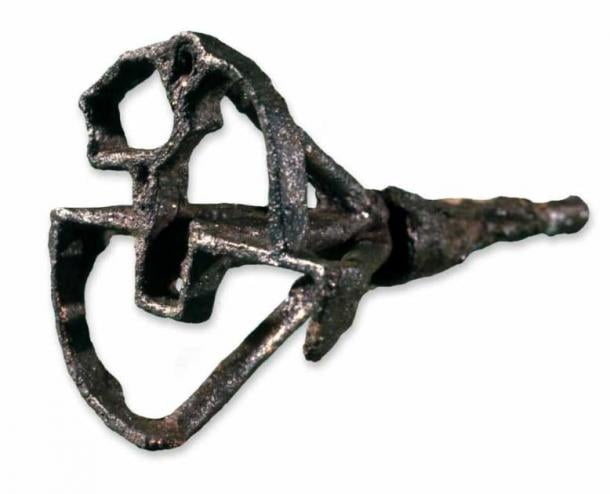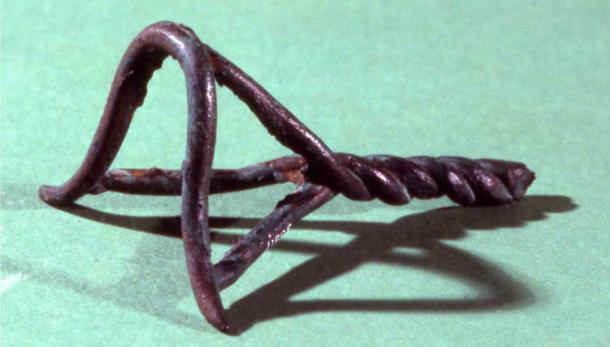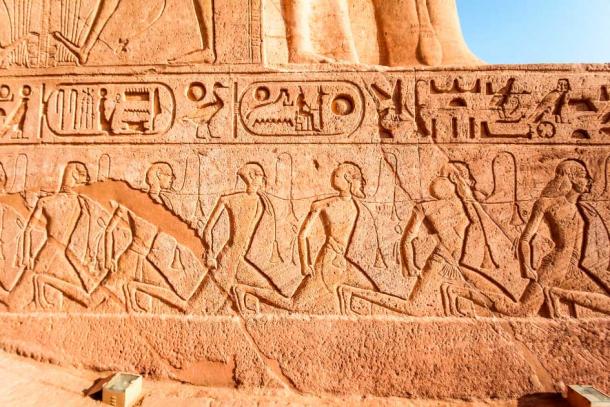It has long been known from carvings and tomb paintings that the ancient Egyptians used branding irons to mark their cattle. Now a new study presents evidence that they also used branding stamps on human slaves , revealing that their status was on par with other property such as cattle.

Nebamun Supervising Estate Activities, Tomb of Nebamun, men branding cattle while the tomb owner, Nebamun, looks on and a scribe records the proceedings., by Charles K. Wilkinson ( Metropolitan Museum of Art / Public Domain)
The new research published in The Journal of Egyptian Archaeology reveals that ancient Egyptian texts refer to the sale and transfer of cattle and single out those that have a mark or stamp and those that don’t. There are also paintings that depict restrained oxen, a brazier for heating a branding iron, and a worker using a long-handled brand to mark the animals. Some of these branding irons, which were actually made of bronze, have also been uncovered.
Branding Slaves
However, a collection of 10 branding irons dating from Egypt’s 19 th dynasty (beginning c. 1292 BC), until the 25 th dynasty (ending 656 BC), were most likely used to mark the skin of human slaves as they were too small to use on cattle.
“They are so small that it precludes them from being used on cattle or horses,” study author Ella Karev told Live Science . “I’m not excluding the possibility, but we have no evidence of small animals like goats being branded, and there is so much other evidence of humans being branded.”
- The First Recorded Incident of an Escaped Slave
- From Sumerian Gods to Modern Day: The History of Slavery

Ancient Egyptian branding iron from the 18 th Dynasty. Credit: Trustees of the British Museum (CC by SA 4.0)
Branding Irons Too Small for Animals
Branding irons for cattle are typically four inches wide or larger. Any smaller than this and the mark becomes illegible as a calf grows. But a collection of small branding irons from ancient Egypt are only one third of that size – the same size as branding irons used by Europeans on human slaves in the 19 th century.
Study author Ms Karev, who is a Postdoctoral Teaching Fellow in the Humanities at the University of Chicago, also refers to textual evidence in the form of ancient Egyptian writings that talk of “marking” slaves. It has often been assumed that slaves were marked using tattoos, however, Ms Karev presents substantial evidence that tattoos in ancient Egypt were used exclusively for religious and decorative purposes, while branding was used to mark property.

Ancient Egyptian bronze branding stamp from the 18 th Dynasty. Credit: Trustees of the British Museum (CC by SA 4.0)
Slavery in Ancient Egypt
There were three types of slaves in Ancient Egypt – chattel slaves, who were mostly captives of war; bonded laborers, who were individuals that sold themselves or their children into slavery to pay off debts; and forced laborers, who were workers hired by the ancient Egyptian government. They were required to perform labour as a duty to the State, but they were paid wages for their work.

Egyptian relief of defeated and enslaved enemies at Abu Simbel temple. Source: imagoDens / Adobe Stock
Antonio Loprieno, an Egyptologist at the University of Basel in Switzerland, told Live Science that “marking” was only performed on slaves that were foreigners.
The new study suggests that, if indeed humans were branded, these foreign slaves were seen as nothing more that property or a commodity to be bought and sold.
Top image: A branding iron, representational image. Source: By ines / Adobe Stock
By Joanna Gillan





